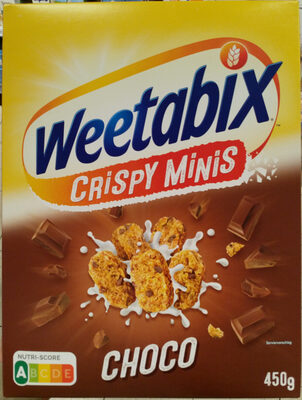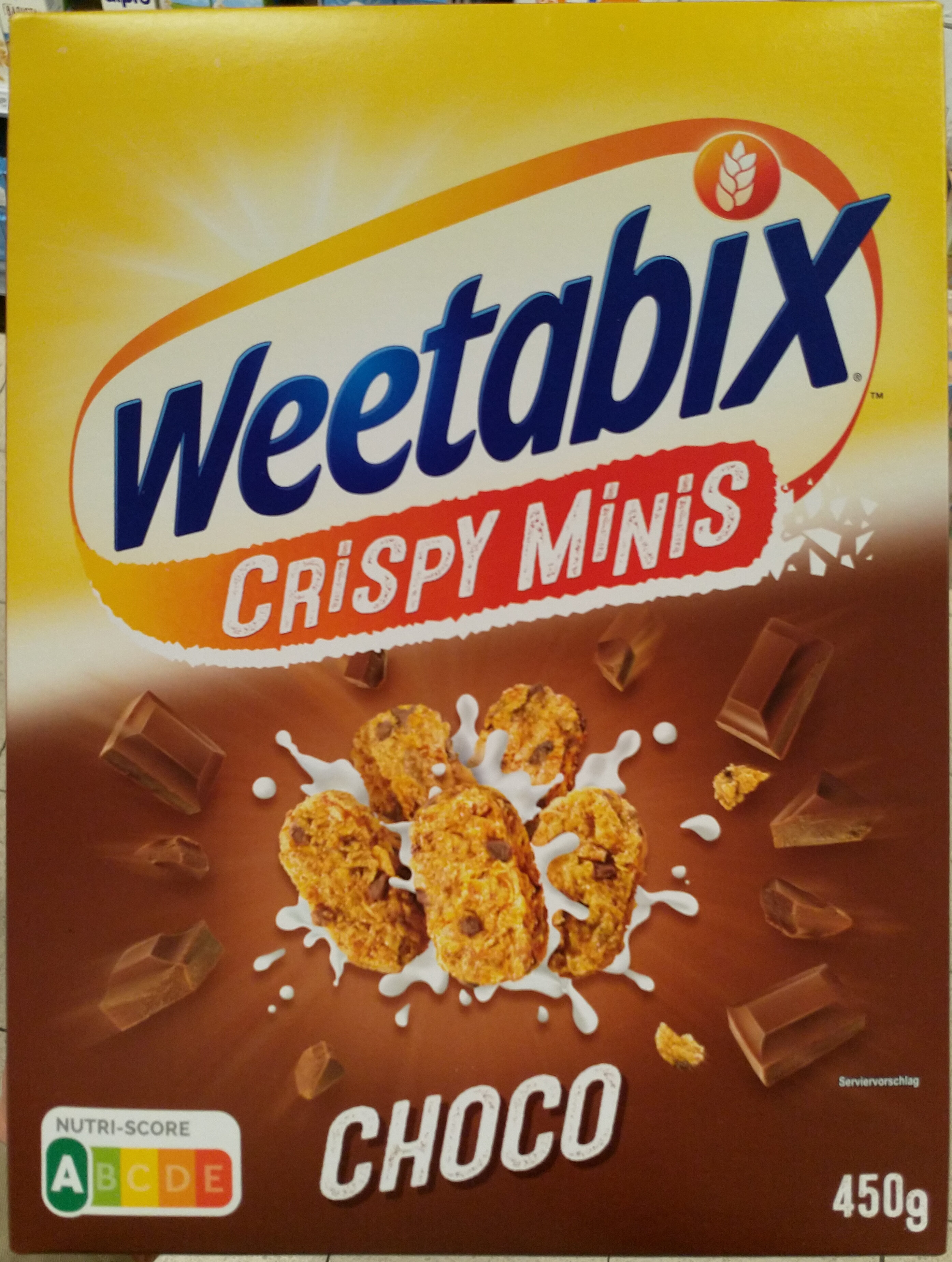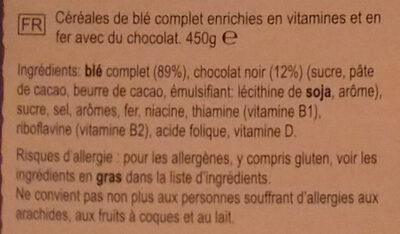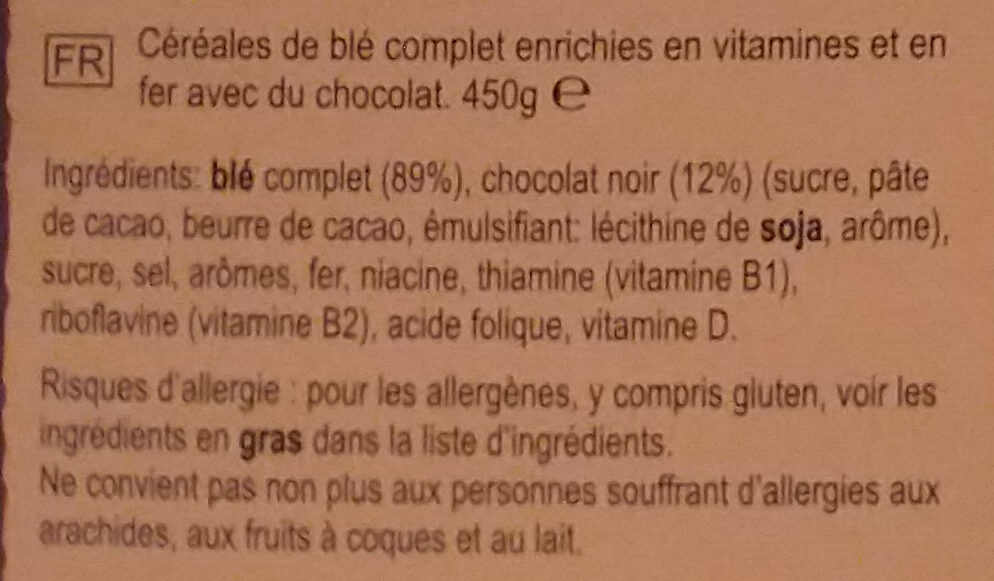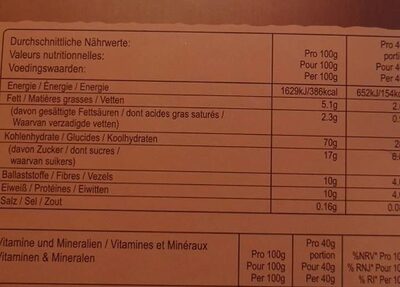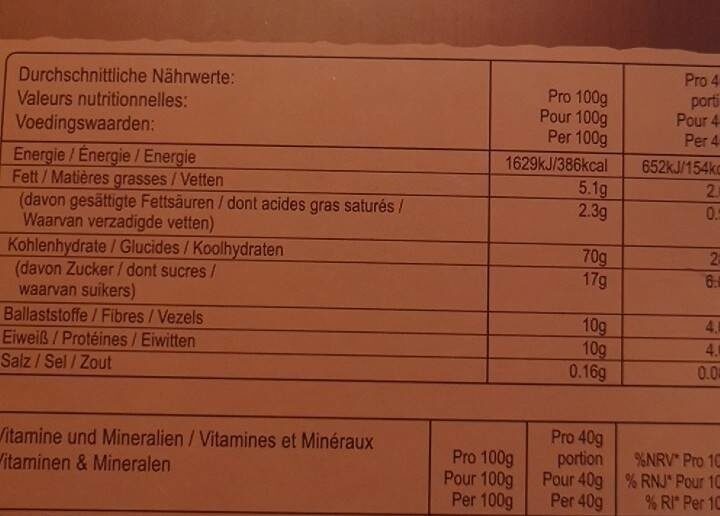Xcrispy minis - Weetabix - 450 g
This product page is not complete. You can help to complete it by editing it and adding more data from the photos we have, or by taking more photos using the app for Android or iPhone/iPad. Thank you!
×
Barra-kodea: 5010029204735 (EAN / EAN-13)
Izen arrunta: Céréales de blé complet enrichies en vitamines et en fer avec du chocolat
Kopurua: 450 g
Ontziratzea: en:Plastic, en:Bag, en:Box, en:Cardboard
Markak: Weetabix
Kategoriak: en:Plant-based foods and beverages, en:Plant-based foods, en:Snacks, en:Breakfasts, en:Cereals and potatoes, en:Sweet snacks, en:Cereals and their products, en:Biscuits and cakes, en:Breakfast cereals, Gaileta, en:Chocolate cereals, en:Chocolate biscuits, en:Extruded cereals, en:Filled cereals
Etiketak, ziurtagiriak, sariak:
en:Low or no salt, en:Vegetarian, Source of fibre, en:Green Dot, High fibres, Nutriscore, Nutriscore A
Link to the product page on the official site of the producer: http://weetabix.fr/brands/weetabix-minis...
Dendak: Auchan, Edeka, Albert Heijn, Delhaize, Kaufland, Eroski
Saltzen diren herrialdeak: Belgika, Frantzia, Alemania, Herbehereak, Espainia
Matching with your preferences
Ingurumena
Carbon footprint
Ontziratzea
Transportation
Report a problem
Datuen iturria
Product added on by openfoodfacts-contributors
Last edit of product page on by thaialagata.
Produktuaren orria -gatik editatua adecastr, aleene, ayecptn, bartolomeu, beniben, countrybot, ecoscore-impact-estimator, egjmoorington, fluff, grumpf, hale, hangy, hommedanslalune, kiliweb, lippi80, moon-rabbit, musarana, nouky20, packbot, quechoisir, roboto-app, sachab, scanbot, tacite, tacite-mass-editor, tequiladog, yuka.VEtaZk0vVS9tTWRha3RnZi94eU40UGxlbkpDVFEwcVFMOVFQSVE9PQ, yuka.sY2b0xO6T85zoF3NwEKvlkJceNTR_xzCDkX5khS67-WOHpLuTMEu-rmlL6g, yuka.sY2b0xO6T85zoF3NwEKvllJbbYKCpDbfDxvji3_Rn9e_Hr3ZYusp45DrL6s, yuka.sY2b0xO6T85zoF3NwEKvlmZXb8bvoTffaUHTpEOHz46hDbXuWs5f0I7bIag, zoneblockscommunity.
